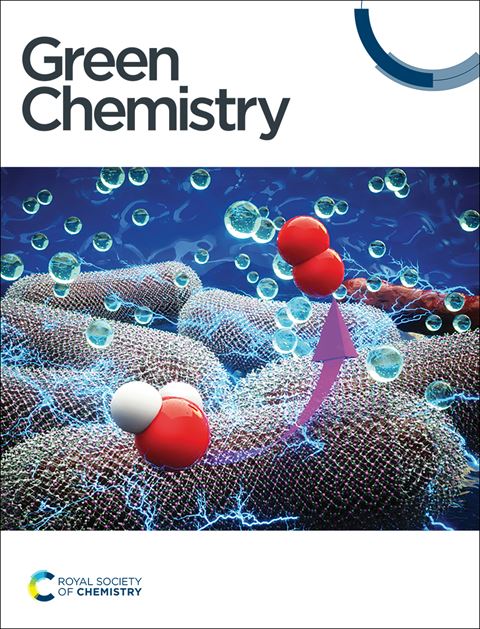Selective oxidation of polyols to primary hydroxyl acids by plasmonic catalysis on an Au–Pt nanoalloy irradiated by visible light†
IF 9.3
1区 化学
Q1 CHEMISTRY, MULTIDISCIPLINARY
引用次数: 0
Abstract
The integration of plasmonic metals with active transition metal-based catalysts has the potential to expand the range of chemical reactions feasible through plasmonic photocatalysis. This study reports a photocatalyst combining plasmonic Au and catalytically active Pt in the form of an Au–Pt nanoalloy supported on ZrO2 nanopowder. This photocatalyst operates more effectively and selectively for the oxidation of polyols under visible light illumination than under conventional conditions, demonstrating a promising green process. By meticulously contrasting the photoelectronic properties, optical absorption, and in situ characterization of the catalyst, we have been able to substantiate the synergistic and plasmonic effect that enhances reaction efficiency. Light-excited hot electrons were observed to enhance the adsorption of oxygen by the photocatalyst, thereby accelerating the formation of ˙O2−. Intense electromagnetic near fields generated at the illuminated plasmonic photocatalyst were observed to significantly enhance the chemisorption of the reactant onto the catalyst surface and the desorption of products. This green photocatalytic procedure is effective in a continuous-flow reactor under ambient temperature, ambient pressure, and simulated sunlight irradiation, allowing for the gram-scale production of 0.58 g of glycolate from 0.62 g of ethylene glycol.

将等离子金属与活性过渡金属催化剂结合在一起,有可能通过等离子光催化技术扩大化学反应的范围。本研究报告了一种光催化剂,它将质子金和催化活性铂以金铂纳米合金的形式结合在一起,并支撑在 ZrO2 纳米粉体上。与传统条件相比,这种光催化剂在可见光照射下能更有效、更有选择性地氧化多元醇,是一种前景广阔的绿色工艺。通过细致对比催化剂的光电子特性、光学吸收和原位表征,我们证实了提高反应效率的协同和等离子效应。据观察,光激发的热电子增强了光催化剂对氧气的吸附,从而加速了 ˙O2- 的形成。据观察,在被照亮的等离子体光催化剂上产生的强电磁近场显著增强了反应物在催化剂表面的化学吸附和产物的解吸。这种绿色光催化程序在环境温度、环境压力和模拟太阳光照射下的连续流反应器中非常有效,可以从 0.62 克乙二醇生产出 0.58 克羟基乙酸酯。
本文章由计算机程序翻译,如有差异,请以英文原文为准。
求助全文
约1分钟内获得全文
求助全文
来源期刊

Green Chemistry
化学-化学综合
CiteScore
16.10
自引率
7.10%
发文量
677
审稿时长
1.4 months
期刊介绍:
Green Chemistry is a journal that provides a unique forum for the publication of innovative research on the development of alternative green and sustainable technologies. The scope of Green Chemistry is based on the definition proposed by Anastas and Warner (Green Chemistry: Theory and Practice, P T Anastas and J C Warner, Oxford University Press, Oxford, 1998), which defines green chemistry as the utilisation of a set of principles that reduces or eliminates the use or generation of hazardous substances in the design, manufacture and application of chemical products. Green Chemistry aims to reduce the environmental impact of the chemical enterprise by developing a technology base that is inherently non-toxic to living things and the environment. The journal welcomes submissions on all aspects of research relating to this endeavor and publishes original and significant cutting-edge research that is likely to be of wide general appeal. For a work to be published, it must present a significant advance in green chemistry, including a comparison with existing methods and a demonstration of advantages over those methods.
 求助内容:
求助内容: 应助结果提醒方式:
应助结果提醒方式:


